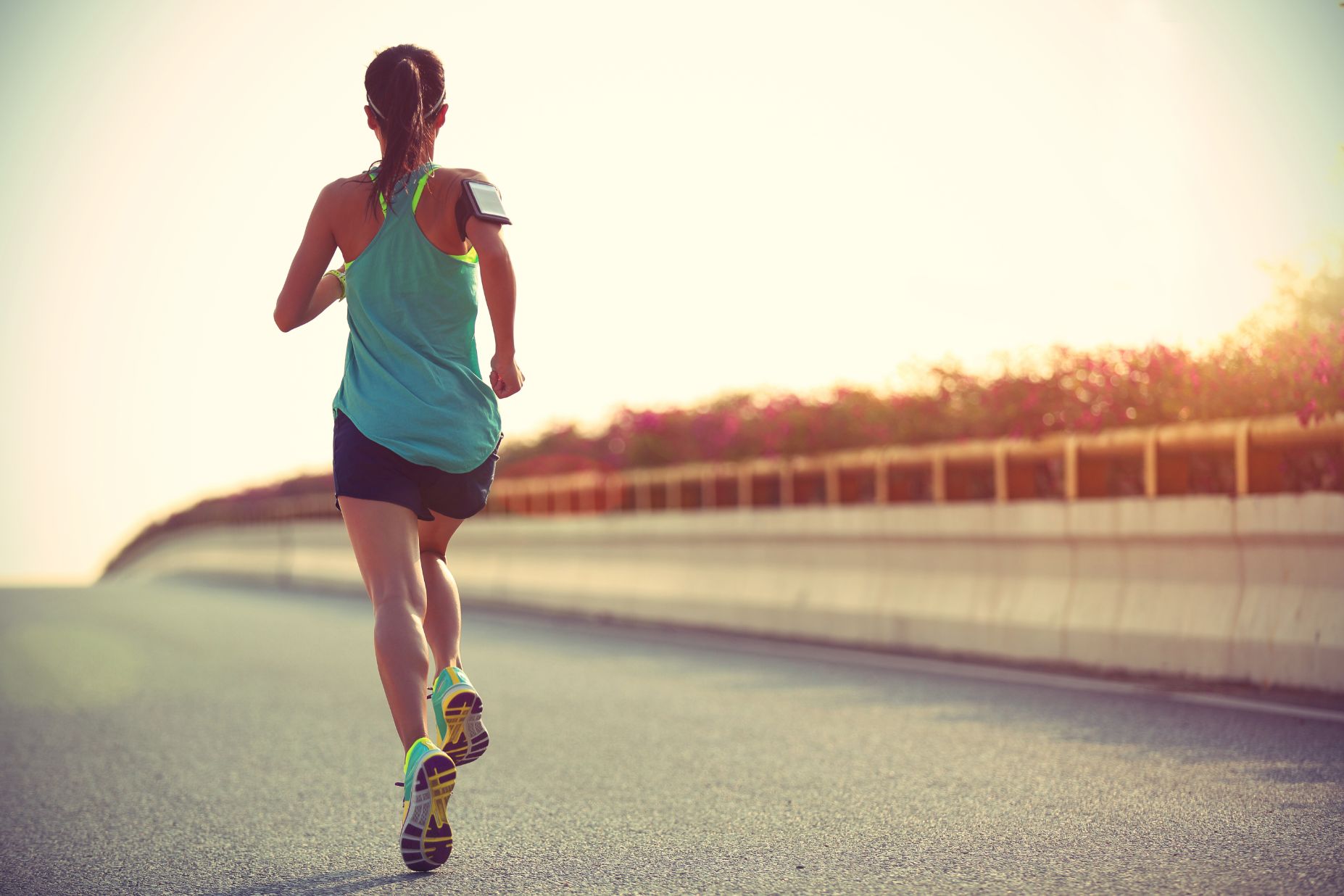At no other time in my life have I seen so many people jogging and running in their neighborhoods and on nearby trails. Since March, I have seen people of all ages—and with varying levels of speed, agility and experience—grabbing their running shoes and hitting the pavement at all hours.
It’s no surprise that at a time of stress and uncertainty, people have turned to one of the most basic forms of human exercise. The Covid-19 pandemic has presented numerous challenges for everyone, limiting our access to the activities and sports we love. It has also created stress and a mounting frustration that many of us feel we need to “burn off.” Running can provide that: It is both flexible and accessible. It is a unifying activity that transcends barriers of age, gender and socioeconomic status. And, it is an outstanding fitness foundation for numerous other sports, which, most importantly for the moment, can be done in a socially distanced fashion.
BECOMING A RUNNER
I’m already a convert. I have been a running enthusiast for more than 30 years. It started out simply enough: At 18, I began running to stay fit. Since then, not only has it helped me maintain my fitness, but it has also allowed me to explore the world around me. I’ve run in the Berkeley Hills up the Fire Trail, through San Francisco’s Golden Gate Park, in the Boston Public Gardens, over the Brooklyn Bridge, around the Imperial Palace in Tokyo, and through stunning parts of Europe. And, closer to home, I’ve made my way around Tod’s Point in Greenwich way too many times to count! My husband Dave and I even got engaged while sitting on a park bench along the Charles River during a running break. (He had the ring hidden in his running glove!) And, I am extremely grateful to have run numerous races with our children, two of whom now run competitively, and with our third about to embark on her first cross country season.
My running has also been a means to process personal struggles and to also generate exciting and creative ideas. Like a friendship, there are times when I was more committed to my running routine, and times when I was more distant. I’ve had to make numerous adjustments— through three pregnancies and a variety of physical injuries. As a result, I also understand the importance of cross training and strength training. While I started off with shorter distances (5Ks and 10Ks) in my 20s, in my 30s I started running half marathons, and in my 40s I completed my first marathon (New York City, at 46). Now, edging towards 50, I’m delving into endurance trail running at a slower pace, up steeper climbs. The best part of my trail experience has been running with my 17-year old daughter, Mari. I can never catch her, but she always waits for me at the top of each big hill stretch with a smile yelling, “You’ve got this, Mom!”
THE BENEFITS OF RUNNING
The health benefits of regular exercise are numerous and well-established. They include improved cardiovascular fitness, lower blood pressure and improved cholesterol, sounder sleep, sharper concentration, an endorphin-mediated boost in mental health, and increased longevity. As a weight-bearing sport, running also helps maintain muscle mass and bone density as people age. And, there are studies that suggest that the benefits of running are also available to those who begin jogging later in life—even after age 50. The moral? As Nike says, “Just do it!”
AVOIDING INJURIES WHILE RUNNING
As we head toward the uncertainties of fall and winter, I believe there will be greater curiosity about running—and a desire to give it a try. But while I would encourage everyone to do just that, it’s also important to approach the sport with a healthy respect and the knowledge required to avoid injury. To help, I asked experts in this area for their go-to tips for runners.
Dr. Karen M. Sutton, associate professor at Weill Cornell Medicine and sports medicine orthopaedic surgeon at the Hospital for Special Surgery in New York City.
“Running sounds like a simple activity— just move your feet forward as fast as you can. The problem is this: If that is your mantra, your bones and joints will not be able to keep up. Many common running injuries can be prevented by strength and conditioning training for your core and “glutes,” appropriate footwear, and getting a good night’s sleep. Simple core exercises decrease your chances of iliotibial band friction syndrome, patellar tendonitis and shin splints. For starters, I would recommend incorporating variations of plank poses, and squats. For hip flexibility, I am a huge proponent of the warrior poses. To progress, doing core work with a kettlebell can help with balancing and stabilizing muscles that keep you on track for longer runs. And never forget, the best recovery is sleep!”
Dr. Paul M. Sethi, president of ONS Foundation, Greenwich, CT , which also operates The ONS Sports and Shoulder Service
“Running can be an excellent means of exercise, conditioning and an important part of a training regimen for student athletes. It is important to not only train your body for endurance, but also to include stretching and strengthening components as you gradually increase your mileage. In addition to increasing mileage, athletes can alter their cadence in pace to help get varied workouts. Overtraining, or making gains too rapidly, are often a culprit in developing injuries. It’s critical to pay attention to your body and to listen to when it hurts—and not necessarily [to] push through pain.”

Dr. Samantha Smith, a Yale Medicine sports medicine physician and assistant clinical professor of orthopaedics and rehabilitation at Yale School of Medicine in New Haven, CT.
“For most runners, there’s not a ton of objective evidence that there’s one ‘best way’ to do things, although for specific individuals, there may be adjustments that are helpful based on foot mechanics or flexibility or strength—all things a sports medicine provider routinely evaluates during an office visit. There are three things, though, that I can strongly recommend to most runners to prevent injury:
The first is to build up volume and training load gradually. Most sports medicine providers would recommend increasing mileage by no more than 10 percent per week to allow your body (bones in particular) to adapt to a higher load.
The second is to give yourself adequate recovery time, especially after long runs. It can be hard to stick to training plans, particularly for a race that takes months of preparation like a marathon. And sometimes when athletes get behind or miss a run, they might skip recovery days to try to make up the time. It would be better to incorporate a low impact cross training exercise as an active recovery day, than to cram in an extra run on your day off.
Lastly, I see a lot of runners in my office with hip or knee pain from overuse that is associated with weakness of the hip abductor muscles (some sources call this “dead butt” syndrome!). These muscles help to keep your hips and pelvis level when you are balancing on one leg—which is about 40% of the gait cycle in running. The hype about the importance of gluteus medius strengthening is real, and I recommend strengthening exercises to many of my patients when I detect weakness of this muscle during my exam. A common misperception is that exercises that engage the glutes, like squats and deadlifts, will strengthen the gluteus medius. But in fact, specific exercises, often with lower resistance, are needed, especially for patients who are not activating this muscle properly. I find that athletes of all ages, even very fit athletes, have subtle weakness of these muscles and can benefit from a few minutes a day of targeted exercises to keep them performing at their best.”

Dr. Katherine Noble (“Dr. Katy”) is a Harvard-trained pediatrician, who has practiced in lower Fairfield County for more than 15 years. She is the founder and managing partner of Sound Beach Pediatrics in Stamford, CT, and is the medical advisor for the Greenwich Public School system. She lives in Old Greenwich, CT, with her husband and three children.



